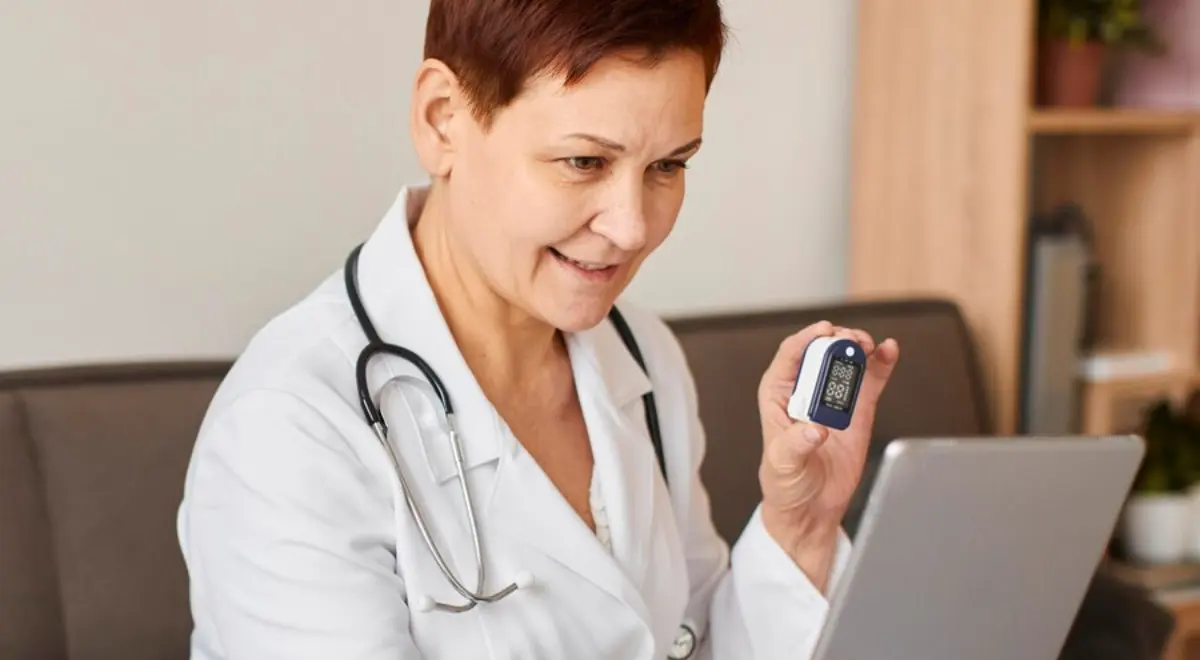Remote Patient Monitoring for Heart Diseases

Healthcare providers are rapidly recognizing the value of cardiac Remote Patient Monitoring (RPM) in managing a variety of heart diseases.
“Heart disease” is a broad term that includes a variety of cardiac disorders. The most common form in the United States is coronary artery disease, which impairs cardiac blood flow and increases the risk of heart attack.
Patient outcomes have improved significantly when cardiovascular disease (CVD) is managed with remote patient monitoring. Use of RPM devices can lower blood pressure, forecast heart failure, and detect arrhythmia early, allowing for timely interventions.
Table of Contents
ToggleRemote Patient Monitoring for Heart Disease and Effectiveness
RPM enables patients to stay at home and continue with their daily routines, while allowing clinicians to identify and prevent potential emergencies in patients suffering from cardiovascular disorders, such as congestive heart failure.
Patients enrolled in an RPM program had 65% fewer hospital admissions and 85% fewer inpatient services, resulting in claim savings of $615,127 approximately. The significance of RPM in heart patients include:
- Reduced Readmissions in Congestive Heart Failure Patients
Remote patient monitoring minimizes readmissions, contributes to value-based care, and improves health outcomes in heart patients. An RPM program for heart failure, combined with structured treatment plan, remote patient monitoring devices, and alert-specific medication, resulted in fewer chances of cardiac hospitalization and ER visits.
- Improved Medical Access in Rural Areas
Remote patient monitoring improve access to preventative care for chronic diseases in underserved populations, such as those with heart disease. Medicare recipients are eligible for RPM services if the device is considered suitable for managing or improving the patient’s health condition. RPM has the ability to overcome the access and transportation gap for people in remote locations, allowing them to receive timely healthcare services.
- Cost Effective Monitoring Plan
High hospital readmission rates increase the economic burden of heart failure. The Hospital Readmission Reduction Program (HRRP) penalizes hospitals with high readmission rates for heart failure, among many other chronic ailments. By tracking the patient vitals and providing timely interventions, remote patient monitoring has significantly reduced the rehospitalization rate for patients with heart diseases and ensures cost-effective monitoring.
- Improves Clinical Efficiency
Healthcare organizations must understand how to implement an effective remote patient monitoring workflow to have a little impact on clinical workflows of healthcare providers. This is because remote patient monitoring enables clinicians to prioritize healthcare delivery, assess each patient’s real-time condition, and respond appropriately with a customized treatment plan.
RPM Drives Better Heart Health Outcomes
RPM is used to treat hypertension, cardiac failure, and arrhythmias. Cardiac patients frequently require prescription modifications, and data collected from remote devices aids in identifying these needs. It can be used for more than only illness management; it can also increase patient adherence, clinical trial monitoring, pre/post-op monitoring, and the prediction/prevention of cardiac events.
RPM provides physicians with the vital data required for holistic monitoring of the patient’s condition, allowing for timely intervention to avoid costly acute episodes and hospital admissions.
The American Heart Association (AHA) supports evidence-based remote patient monitoring technologies that boost health outcomes.
- RPM plays a significant role in improving hypertension and lowering the economic burden of costly hospital admissions. It helps lower systolic and diastolic blood pressure when compared to standard care and self-monitoring.
- Recent systematic reviews and meta-analyses have found that heart failure-related hospitalizations and mortality rates have improved. RPM helps in enhancing heart health outcomes.
- Atrial fibrillation is connected with an increased risk of stroke, heart failure, hospitalization, and death. RPM has the potential to enhance outcomes by allowing for accurate and early identification of underlying ailments while also lowering mortality and hospitalization rates.
Cellular Connected Medical Devices For Monitoring Heart Ailments
RPM consists of a wide range of bluetooth and cellular connected medical devices for on the go tracking of vitals. These devices give clinicians with the vital records needed for comprehensive monitoring of a patient’s status, allowing for timely intervention to avoid costly acute episodes.
The digital transformation of healthcare involves reducing expenses, staff workload, and treatment time by improving patient monitoring systems. Digital health platforms and RPM technologies, both wearable and non-wearable, are continuously helping in transforming heart disease management by improving healthcare efficiency and accessibility.
Utilize HealthArc’s RPM Platform For Monitoring Heart Health
HealthArc’s all-in-one remote patient monitoring software helps practices connect to their patients, optimize reimbursement and minimize documentation with increased clinical efficiency. With our HIPAA compliant platform, communicate with patients via audio-video calls, SMS, make care plans available to the patient, re-fill prescriptions, and review diagnostics.
HealthArc offers seamless integration with all leading EHRs through HL7 and FHIR capabilities to manage patients dealing with heart conditions. To know how our RPM software helps in boosting heart health, book a free demo now or feel free to talk to our team at +201 885 5571 for more details.
Most recent blogs
Categories
- Advanced Primary Care Management
- Behavioral Health Integration
- Cellular Remote Patient Monitoring
- Chronic Care Management
- Chronic Care Management Billing
- Chronic Care Management CPT Codes
- Chronic Care Management Program
- Chronic Care Management Software
- Digital Health Platform
- Principal Care Management
- Principal Care Management CPT Codes
- Remote Care Programs
- Remote Monitoring Devices
- Remote Patient Care
- Remote Patient Monitoring
- Remote Patient Monitoring Billing
- Remote Patient Monitoring CPT Codes
- Remote Patient Monitoring Devices
- Remote Patient Software
- Remote Therapeutic Monitoring
- Remote Therapeutic Monitoring Billing
- Remote Therapeutic Monitoring CPT Codes
- Telemedicine & RPM
- Transitional Care Management
- Transitional Care Management Billing
- Transitional Care Management CPT Codes
Related Posts
- March 1, 2025 | Read Time: 6 mins
AI in Remote Patient Monitoring: Predictive Analytics, Early Detection, & Personalized Care
- February 25, 2025 | Read Time: 5 mins
Wearable Devices & Their Role in Remote Patient Monitoring
- February 21, 2025 | Read Time: 5 mins






